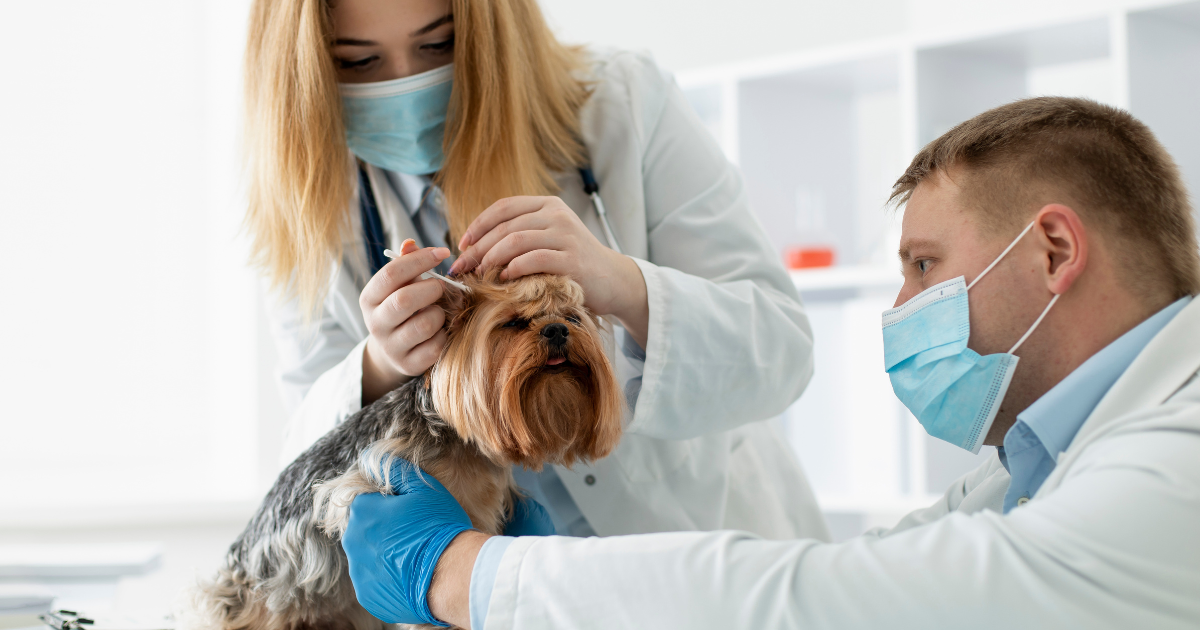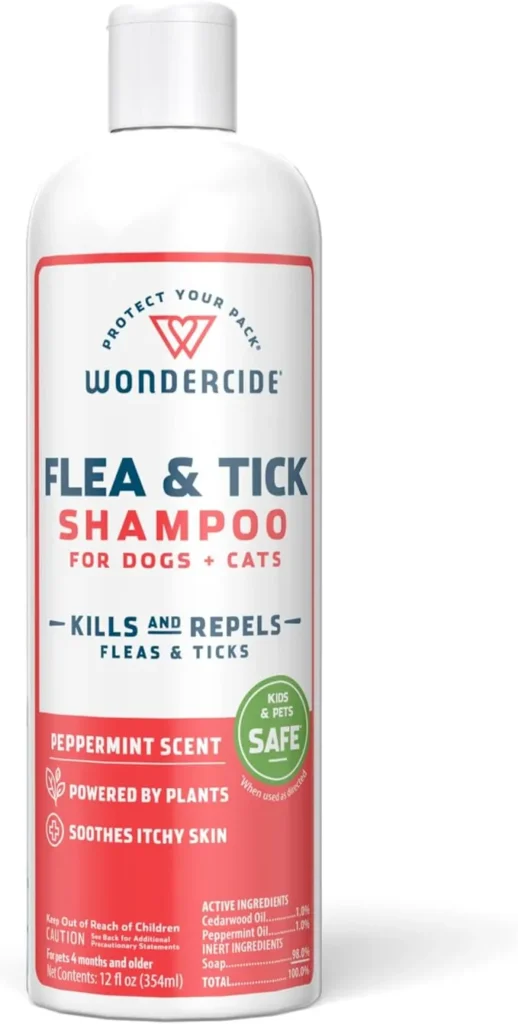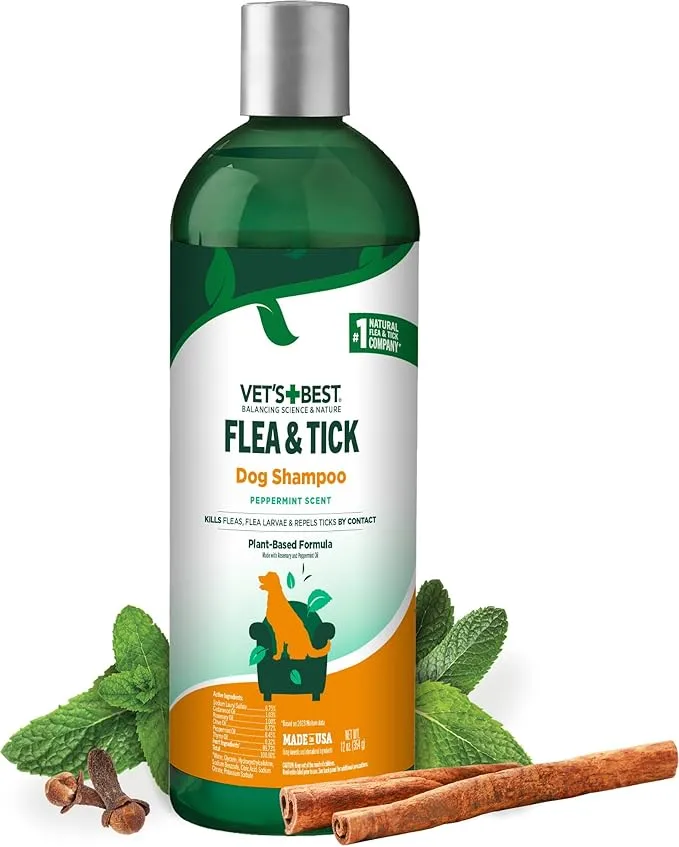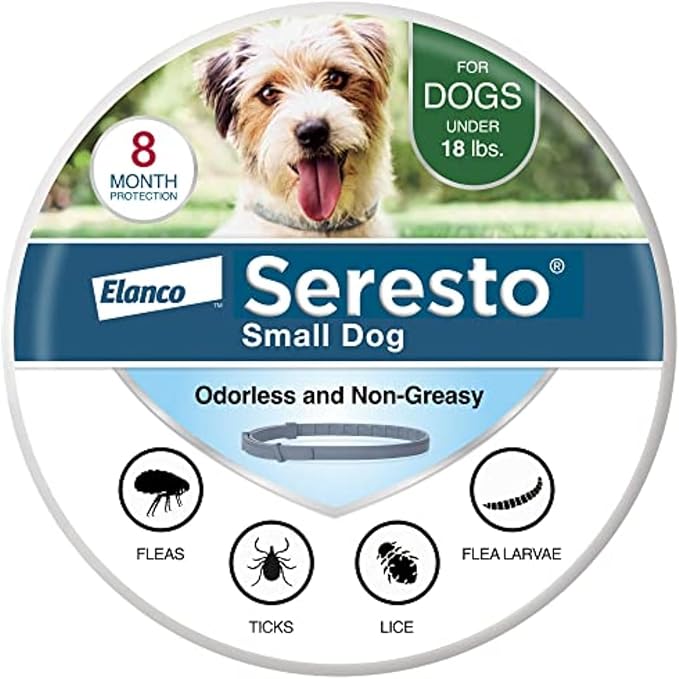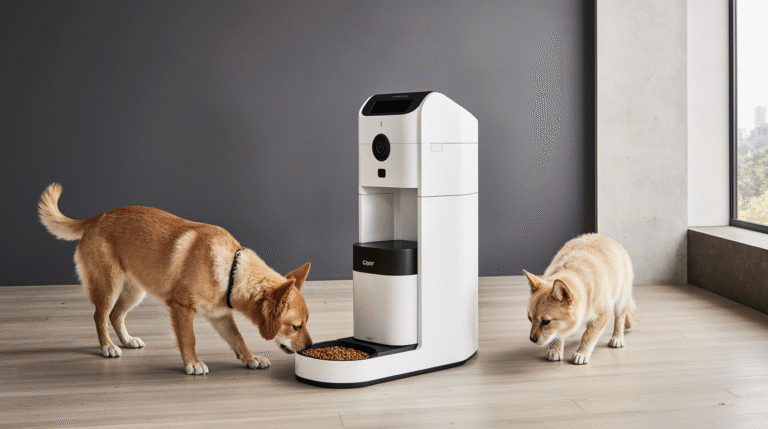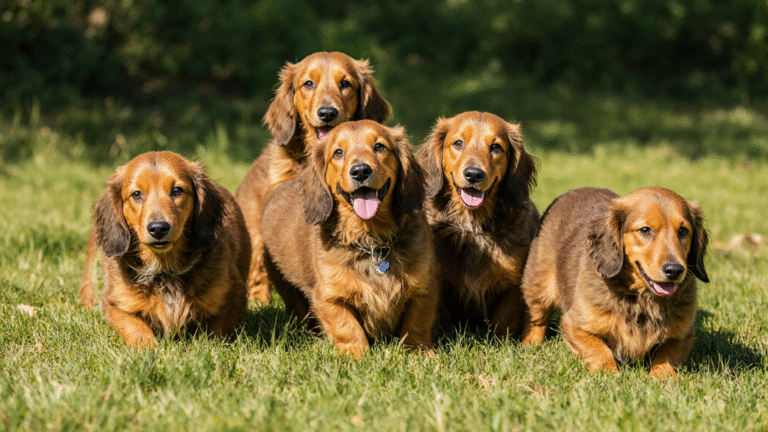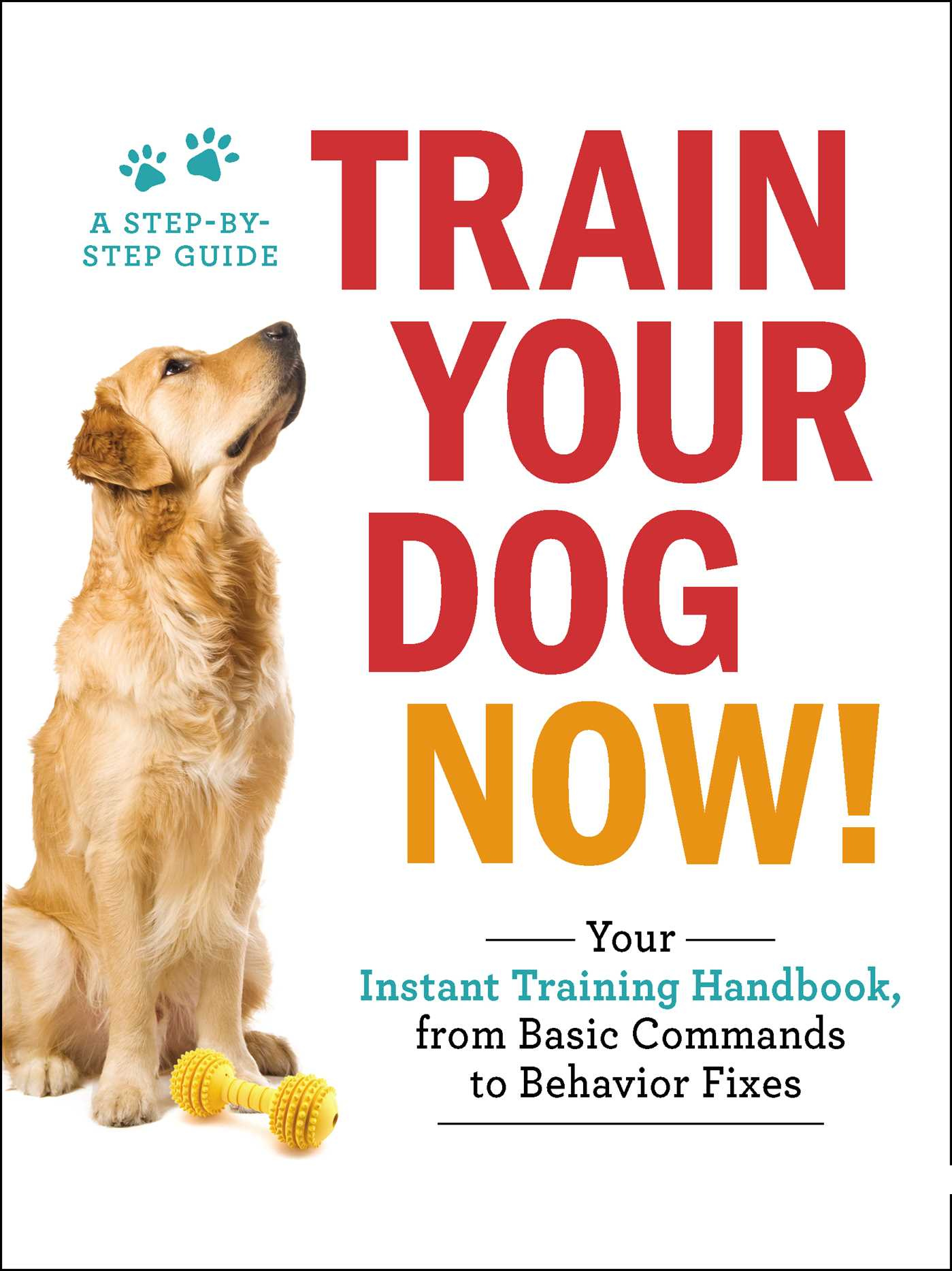Can Dogs Get Lice?
Can Dogs Get Lice? Signs, Treatments & Prevention (2025 Guide)
As a dog owner, you’re probably aware of the common pests that can bother your furry friend, like fleas and ticks. However, lice infestation is another issue that can cause discomfort and health problems for your dog. Yes, dogs can get lice, and it’s essential to know the signs, treatments, and prevention methods to keep your pet healthy.
Lice are tiny, wingless insects that feed on your dog’s skin, causing irritation and potentially leading to infections. If you’re wondering whether your dog has lice, it’s crucial to identify the signs and take action promptly. In this guide, we’ll walk you through the symptoms, treatment options, and ways to prevent lice infestation in your dog.
Table of Contents
Key Takeaways
- Understand the signs of lice infestation in dogs.
- Learn effective treatment options for dog lice.
- Discover ways to prevent lice infestation in your dog.
- Identify the risks associated with dog lice.
- Find out how to keep your dog healthy and lice-free.
Understanding Dog Lice: The Basics
Understanding dog lice is crucial for any dog owner, as these tiny parasites can lead to significant health issues if left untreated. Dogs of all ages and kinds are susceptible to the prevalent issue of dog lice.
What Are Dog Lice?
Dog lice are microscopic parasitic insects that consume blood, skin waste, and other materials found in a dog’s coat. They are species-specific, meaning they are adapted to live on dogs and cannot survive for long periods on humans or other animals.
Life Cycle of Dog Lice
The life cycle of dog lice consists of three stages: egg, nymph, and adult. Eggs are attached to the dog’s hair, while nymphs and adults live on the dog’s skin, feeding and reproducing.
How Common Are Lice in Dogs?
Lice infestations are relatively common in dogs, especially in puppies, older dogs, and those with compromised immune systems. Additionally, dogs with underlying medical issues or malnutrition are more vulnerable to lice infestations.
By understanding the basics of dog lice, you can take the first step in protecting your dog from these pesky parasites. Regular grooming and monitoring can help identify lice infestations early, allowing for prompt treatment and prevention of further complications.
Can Dogs Get Lice from Humans?
One common concern among dog owners is whether their pets can contract lice from humans. Fortunately, lice are typically species-specific, which means they have evolved to dwell on particular hosts.
Species-Specific Nature of Lice
Generally speaking, lice that infest humans are not the same as those that infest canines. Human lice, such as Pediculus humanus capitis, are adapted to the human scalp and cannot survive for long on dogs. Dog lice are also not well suited to live on people because they are adapted to live on dogs.
Cross-Species Transmission Risks
While the risk of cross-species transmission is low due to the species-specific nature of lice, it’s not entirely impossible.However, it is quite uncommon for dogs to contract lice from people. According to experts, “The transmission of lice between different species is highly unlikely due to their host specificity”
Dr. Jane Smith, Parasitologist
. It’s safe to assume that you won’t give your dog lice.
| Lice Type | Primary Host | Can Infest Other Hosts? |
| Human Lice | Humans | Rarely |
| Dog Lice | Dogs | Rarely |
In summary, while it’s theoretically possible for dogs to be exposed to human lice, the likelihood of them getting infested is extremely low due to the species-specific nature of lice. If you’re concerned about your dog having lice, it’s still important to consult with a veterinarian.
Signs and Symptoms of Lice in Dogs
Lice infestation in dogs manifests through various physical and behavioral symptoms that pet owners should be aware of. Recognizing these signs early can help in providing timely relief and treatment to your dog.
Physical Symptoms to Watch For
One of the primary indicators of lice infestation is intense itching, which can lead to scratching and skin irritation. You might also notice:
- Small, moving dots on your dog’s coat, which are the lice themselves.
- Nits (eggs) attached to the hair shafts, often near the skin.
- Skin lesions or dermatitis due to excessive scratching.
These physical symptoms are crucial for diagnosing dog lice.
Behavioral Changes in Dogs with Lice
Dogs infested with lice often exhibit behavioral changes, including:
- Increased restlessness and irritability.
- Excessive scratching or chewing at their coat.
- Possible loss of appetite or lethargy in severe cases.
These changes can be distressing for your dog, making it essential to address the issue promptly.
New to crate training or struggling to make it work? This detailed resource on how to crate train a dog covers practical steps, mistakes to avoid, and tips for success.
Differentiating Lice from Other Parasites
It’s crucial to differentiate lice from other parasites like fleas or mites. Lice are species-specific and tend to stay close to the skin, whereas fleas can jump and are more widespread on the body. If you suspect your dog has lice, consult a veterinarian for an accurate diagnosis and appropriate treatment.
Understanding the signs and symptoms of lice and dogs can help you take the necessary steps to ensure your dog’s health and comfort.
Types of Lice That Affect Dogs
Understanding the different types of lice that affect dogs is crucial for effective treatment and prevention. Dogs can host various species of lice, each with its unique characteristics and effects on canine health.
Trichodectes Canis (Chewing Lice)
Trichodectes canis, commonly known as chewing lice, are one of the most common types of lice found on dogs. These lice feed on skin debris, hair, and other materials, causing irritation and discomfort to the dog. They are typically found on the ears, neck, and tail areas.
Linognathus Setosus (Sucking Lice)
Linognathus setosus, or sucking lice, are another type that infests dogs. Unlike chewing lice, sucking lice feed on the dog’s blood, which can lead to anemia in severe cases. They are more challenging to treat due to their feeding behavior.
Heterodoxus Spiniger (Another Type of Chewing Lice)
Another type of chewing lice that infects dogs is Heterodoxus spiniger.Although less common than Trichodectes canis, it still poses a significant risk, especially in environments where dogs are in close contact with each other.
Recognizing the type of lice infesting your dog is essential for choosing the right treatment approach. Consulting with a veterinarian is crucial for determining the best course of action.
How Veterinarians Diagnose Lice in Dogs
Using a mix of visual inspections and microscopic examination, your veterinarian is essential in identifying lice in dogs.Diagnosing dog lice involves a thorough examination to confirm the presence of these parasites.
Visual Examination Process
The first step in diagnosing dog lice is a visual examination. Your veterinarian will inspect your dog’s coat, looking for signs of lice or their eggs (nits) attached to the hair shafts. Additionally, they will look for any sores or skin irritation brought on by lice.
Microscopic Confirmation
To confirm the diagnosis, your veterinarian may perform a microscopic examination. They will examine a sample of your dog’s hair or skin scrapings under a microscope to check for lice or nits.This step is crucial in confirming the presence of Trichodectes canis or other types of lice.
Ruling Out Other Conditions
It’s also important for your veterinarian to rule out other conditions that may mimic the symptoms of dog lice, such as fleas, ticks, or skin allergies. A thorough diagnosis ensures that your dog receives the appropriate treatment for their specific condition.
Can Dogs Get Lice? Understanding Transmission
The transmission of lice to dogs can occur through direct contact with infected animals or contaminated environments. Understanding how lice are obtained is essential to treating and preventing this parasitic infection in dogs.
How Dogs Contract Lice
Dogs can get lice through direct contact with an infected dog or by coming into contact with contaminated items such as bedding, grooming tools, or even the environment where an infected dog has been. Lice are highly contagious and can spread quickly in areas where dogs are in close proximity to each other.
High-Risk Environments and Situations
Certain environments and situations increase the risk of dogs contracting lice. These include:
- Dog daycare centers
- Dog parks
- Grooming salons
- Dog shows or competitions
- Shelters or rescue homes
In these settings, dogs are more likely to come into contact with other infected dogs or contaminated surfaces.
Myths About Lice Transmission in Dogs
There’s a common misconception that lice can jump from one dog to another. Lice, on the other hand, are usually transmitted by direct contact and are actually fairly immobile. Another myth is that lice infestations are a sign of poor hygiene or poor health in dogs. In reality, any dog can get lice, regardless of their health or grooming habits.
Risk Factors for Lice Infestation
Some factors increase a dog’s risk of getting lice. These include:
| Risk Factor | Description |
| Age | Puppies and younger dogs are especially at risk since their immune systems are still developing. |
| Health Status | Lice infestations are more common in dogs with weakened immune systems or pre-existing medical conditions. |
| Environment | Dogs living in close quarters with other dogs, such as in shelters or multi-dog households, are at higher risk. |
By understanding these risk factors and how lice are transmitted, you can take steps to protect your dog and prevent lice infestations.
👉 “If you’re unsure about the safety of certain foods, check out our full guide on whether dogs can have mushrooms and what to avoid.”
Effective Treatments for Dog Lice
When your dog contracts lice, it’s crucial to act quickly with the right treatment to prevent further complications. Dog lice can cause discomfort, skin irritation, and even lead to secondary infections if left untreated. Understanding the available treatment options is key to effectively managing the infestation.
Prescription Medications
Prescription medications are often the most effective way to treat dog lice. These medications can come in various forms, including topical treatments and oral medications. Your veterinarian can recommend the best prescription medication based on the severity of the infestation and your dog’s health status.
Some common prescription medications include those that contain ingredients like imidacloprid or fipronil, which are known for their efficacy against lice and other parasites. Always follow your veterinarian’s instructions for administering these medications to ensure your dog’s safety and the treatment’s effectiveness.
Over-the-Counter Solutions
For less severe cases or as a supplementary treatment, over-the-counter (OTC) solutions can be effective. These include topical treatments and shampoos specifically formulated to kill lice.
Topical Treatments
Topical treatments are applied directly to your dog’s coat to kill lice and sometimes their eggs. These can be in the form of sprays, spot-on treatments, or medicated shampoos. When choosing a topical treatment, look for products containing ingredients known to be effective against lice, such as pyrethrin or permethrin.
Oral Medications
Oral medications can also be used to treat dog lice, especially in cases where topical treatments are not sufficient. These medications work systemically to kill parasites. However, they should be used under the guidance of a veterinarian to ensure they are used safely and effectively.
Top Lice Control Products on Amazon
For convenience, many effective lice control products are available on Amazon. Here are some top-rated options:
When using any of these products, always follow the manufacturer’s instructions and consult with your veterinarian if you have any questions or concerns.
Treating Your Home Environment
Treating dog lice involves more than just medicating your pet; it requires a thorough cleaning of your home. Dog lice can survive off their host for a limited time, making it essential to treat your home environment to prevent reinfestation.
Cleaning Bedding and Living Areas
Start by washing your dog’s bedding, blankets, and any clothing that may have come into contact with your pet. Use hot water and a high heat setting in the dryer to kill lice and their eggs. Vacuum all carpets, rugs, and upholstered furniture, especially areas where your dog spends a lot of time. Dispose of the vacuum bag or empty the canister after each use to prevent lice from escaping.
Environmental Sprays and Treatments
Consider using environmental sprays or treatments that are specifically designed to kill lice and other parasites. These products can be used on surfaces and in areas where your dog comes into contact. Always follow the product instructions and take necessary precautions to avoid exposure.
👉 “Curious if dairy belongs in your pup’s diet? Here’s everything you need to know about whether dogs can drink milk.”
Preventing Reinfestation
To prevent reinfestation, maintain a clean environment by regularly washing bedding and vacuuming living areas. Monitor your dog closely for signs of lice and be prepared to treat them promptly if necessary. By taking these steps, you can help ensure that your home remains lice-free.
Preventing Lice Infestations in Dogs
Dog owners can significantly reduce the risk of lice infestations by implementing a few simple yet effective strategies. Preventing lice involves a combination of regular grooming practices, environmental management, and the use of preventative products.
Regular Grooming Practices
Regular grooming is a crucial step in preventing lice infestations. By frequently inspecting your dog’s coat, you can catch any potential issues early. Use a fine-tooth comb or a lice comb specifically designed for this purpose. Regular bathing with appropriate shampoos can also help deter lice.
Environmental Management
Managing your dog’s environment is another key aspect of lice prevention. Regularly wash your dog’s bedding in hot water and dry it on a high heat setting. Thoroughly clean areas where your dog spends a lot of time, using a vacuum cleaner to remove any lice or eggs that may be present.
Preventative Products
Using preventative products can provide an additional layer of protection against lice. Monthly preventatives can be effective, and there are various products available, including topical treatments and oral medications.
Monthly Preventatives
Monthly preventatives, such as topical treatments, can be applied directly to your dog’s skin to prevent lice infestations. These products often contain ingredients that repel or kill lice.
Preventative Shampoos and Sprays
Using lice-repelling shampoos and sprays can be helpful in addition to monthly preventatives. These products can be used regularly as part of your dog’s grooming routine.
Monitoring Other Pets in the Household
If you have multiple pets in your household, it’s essential to monitor all of them for lice, especially if one pet has been infested. Regular checks and maintaining good hygiene practices across all pets can help prevent the spread of lice.
Home Remedies for Dog Lice
Dog owners seeking a more natural approach to tackling lice infestations might consider home remedies, but it’s crucial to understand their effectiveness and limitations. While these remedies can be a useful adjunct to conventional treatments, they should be used with caution.
Safe DIY Treatment Options
Some pet owners have found success with home remedies such as bathing their dogs in a mixture of apple cider vinegar and water or using a fine-tooth comb to manually remove lice and nits. Regular grooming is also essential in managing and preventing lice infestations.
Limitations of Home Remedies
It’s essential to recognize that home remedies may not be as effective as prescription treatments, especially in severe cases. “Lice infestations can be challenging to eliminate completely without professional guidance,” as noted by veterinary professionals.
When to Avoid Home Treatments
If your dog is experiencing severe symptoms or if the infestation persists despite trying home remedies, it’s time to consult a veterinarian. They can provide a proper diagnosis and recommend effective treatments.
Potential Complications of Untreated Lice in Dogs
Failing to treat dog lice can have far-reaching consequences, affecting not just the dog’s coat but its overall health. Infestations of lice can cause a number of problems if they are not treated.
Secondary Skin Infections
One of the most common complications is secondary skin infections. Dogs infested with lice often scratch and bite at their skin, causing irritation and potentially leading to open sores. These sores can become infected with bacteria, leading to further discomfort and health issues.
Anemia in Severe Cases
In severe cases, especially with sucking lice, the constant feeding on the dog’s blood can lead to anemia. This is particularly concerning in young, old, or already compromised dogs, as their ability to recover from anemia may be impaired.
Impact on Overall Health and Quality of Life
A dog’s quality of life can be greatly impacted by lice infestations.The discomfort and pain caused by lice can lead to changes in behavior, appetite, and overall well-being. If not treated, this can result in a decline in the dog’s health.
Tapeworm Transmission Risk
Some species of lice can carry tapeworms. While rare, there is a risk of tapeworm transmission to dogs during lice infestations. This adds another layer of complexity to the health risks associated with untreated dog lice.
Understanding these potential complications highlights the importance of promptly treating dog lice infestations. You may avoid these problems and guarantee your dog’s comfort and well-being by taking care of the problem as soon as possible.
When to Consult Your Veterinarian
Recognizing the signs that necessitate a vet visit can make a significant difference in treating dog lice. If you suspect that your dog is infested with lice, it’s essential to know when to seek professional help.
Warning Signs That Require Professional Help
If your dog exhibits severe symptoms such as intense itching, hair loss, or signs of secondary skin infections, you should consult a veterinarian promptly. Additionally, if you’ve tried over-the-counter treatments without success, professional guidance is necessary.
What to Expect During a Vet Visit
During a veterinary visit, your dog will undergo a thorough examination to confirm the presence of lice. The vet may perform a visual inspection or microscopic analysis to identify the lice and rule out other conditions. Be prepared to discuss your dog’s medical history, symptoms, and any previous treatments.
Follow-up Care After Treatment
After treatment, it’s crucial to follow your veterinarian’s advice on follow-up care to prevent reinfestation. This may include regular grooming, environmental cleaning, and potentially preventative medications.
| Signs Requiring Vet Visit | Actions During Vet Visit | Follow-up Care |
| Severe itching, hair loss | Visual inspection, microscopic analysis | Regular grooming |
| Secondary skin infections | Discussion of medical history | Environmental cleaning |
| Unsuccessful OTC treatments | Prescription of appropriate treatment | Preventative medications |
Conclusion
Understanding whether can dogs get lice is crucial for any dog owner. Dog lice are a common problem that can cause discomfort and health issues in dogs. By recognizing the signs of lice infestation, such as excessive scratching and skin irritation, you can take prompt action to treat the issue.
Effective treatments for dog lice include prescription medications, over-the-counter solutions, and environmental treatments to prevent reinfestation. Regular grooming practices, environmental management, and preventative products can help prevent lice infestations in dogs.
By staying informed and taking proactive steps, you can protect your dog from the discomfort and health risks associated with dog lice. If you suspect your dog has lice, consult your veterinarian for professional guidance and treatment.
FAQ
Can dogs get lice from humans?
No, dogs cannot get lice from humans. Because lice are species-specific, they have evolved to live on particular types of hosts. Human lice cannot survive on dogs, and dog lice cannot survive on humans.
What symptoms indicate a dog has lice?
Signs of lice infestation in dogs include intense itching, scratching, and biting at the skin, as well as hair loss, skin irritation, and presence of lice or nits (eggs) in the dog’s coat.
How are dog lice diagnosed?
To diagnose dog lice, a veterinarian will examine the dog physically and look for lice or nits in the coat. The diagnosis may also be verified by a microscopic analysis.
Can dogs get lice if they are well-groomed?
Indeed, even well-groomed dogs can still get lice. Lice can infest dogs of any age, breed, or grooming status.
Are there different types of lice that affect dogs?
Yes, there are several types of lice that can affect dogs, including Trichodectes canis (chewing lice), Linognathus setosus (sucking lice), and Heterodoxus spiniger (another type of chewing lice).
How can I stop lice from getting on my dog?
You can prevent your dog from getting lice by using preventative products, such as medicated shampoos and sprays, and by regularly inspecting your dog’s coat for signs of lice. Keeping your dog’s environment clean and washing their bedding regularly can also help.
Can animals other than dogs get lice?
Yes, other animals, such as cats, rabbits, and rodents, can also get lice. However, the types of lice that affect these animals are often different from those that affect dogs.
Are dog lice contagious to other pets in the household?
Yes, dog lice can be contagious to other pets in the household, especially if they are in close contact with the infested dog.
Can I use human lice treatments on my dog?
No, you shouldn’t use human lice on your dog. Dog lice require specific treatments that are designed for canine use, and using human lice treatments can be toxic to dogs.
How can I treat my home environment for dog lice?
To treat your home environment for dog lice, wash your dog’s bedding regularly, vacuum carpets and furniture, and use environmental sprays or treatments to kill lice and nits.

